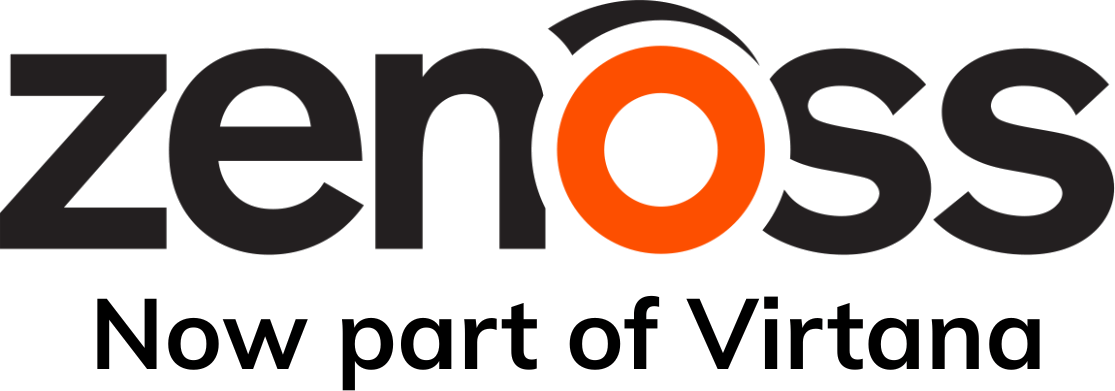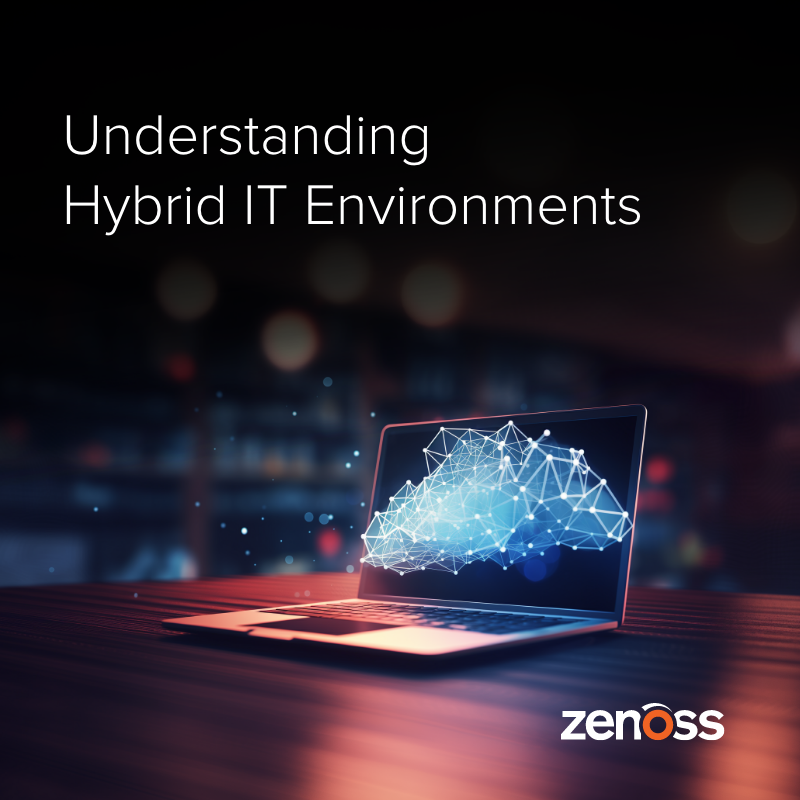In today's tech landscape, businesses are undergoing a significant shift in how they manage their IT infrastructure. Cloud computing has been a huge force in this transformation, leading to a blend of on-prem and cloud-based services known as hybrid IT.
With a hybrid IT infrastructure, you can take advantage of both the control and security of on-prem solutions, as well as the scalability and flexibility of cloud architecture. But is hybrid IT right for your business?
In the article, we’ll guide you through everything you need to know about hybrid environments — from the benefits and drawbacks to the strategies you need to manage them effectively.
What Is Hybrid IT?
Before we get any further, it's important to understand what exactly a hybrid IT environment is. It involves a mix of on-prem data centers, as well as private and/or public cloud resources that are integrated to eliminate potential silos. This enables IT teams to choose which environment is used for each workload, application or service.
It’s also important to note that hybrid IT is not the same thing as hybrid cloud. So, what’s the distinction?
While hybrid cloud architecture is a subset of hybrid IT, these terms aren’t interchangeable. Hybrid cloud specifically refers to an environment in which a business is leveraging both public and private cloud services (multicloud architectures are those where a business is leveraging multiple public cloud providers).
The Benefits of Hybrid IT
Whether you use a form of hybrid cloud infrastructure or a more general hybrid IT environment, there are a range of benefits to these types of architectures, including:
Improving Flexibility
The blend of on-premises infrastructure and cloud services offers significant flexibility, enabling businesses to scale operations dynamically based on fluctuating demands. With the ability to make swift adjustments, you can ensure optimal resource utilization without being confined to a strictly on-prem or cloud environment. For instance, you can store sensitive data on private, on-prem servers to maintain security while keeping the rest on the public cloud. Hybrid cloud computing also makes changing software or hardware much simpler and faster than physical infrastructure, and cloud migration allows you to upgrade legacy systems.
Increasing Agility
In addition to flexibility, agility is a key factor for business success. Not only is it critical to make quick changes in response to fluctuations in demand, but minimizing your time to market is essential to stay competitive. With a hybrid IT model, you can accelerate cloud deployment, optimize performance and scale with demand. This means development cycles shorten and your organization can rapidly innovate to keep up with today’s fast-paced business world.
Reducing Long-Term Costs
Minimizing costs has always been a driving force behind the digital transformation toward the cloud, and hybrid IT is no different. While there will always be an upfront investment in change, hybrid environments offer long-term cost efficiency through their scalability. After all, it's much easier and cost-effective to match demand by expanding a hybrid cloud infrastructure if you only have to pay for the resources you use. On the other hand, maintaining the necessary infrastructure at all times to meet peak demand is often far too expensive.
Maintaining Business Continuity
Utilizing a diverse hybrid IT infrastructure can also help ensure business continuity by preventing your resources from becoming overloaded. With the ability to distribute workloads across different environments, your organization is more resilient against potential disruptions and failures that could lead to downtime. You can also back up critical data on the cloud to significantly reduce disaster recovery times.
The Challenges of Hybrid IT Management
While the benefits of a hybrid IT model are undeniable, there are also a few challenges that come with managing this type of infrastructure, and it's important to understand them; whether you’re already using it or considering the change
Let's take a look at some of the common challenges of hybrid IT management before diving into strategies to help you overcome them.
Infrastructure Complexity
Between managing multiple cloud providers and a diverse set of workloads and infrastructures, hybrid IT can quickly become complicated. Not only can it be difficult to determine the right environment for a given workload, but it can also be challenging to find a solution to manage all of the various elements. That’s because your infrastructure is unique to your organization and the technologies it uses, so any management platform must be tailored for seamless integration.
Service-Level Visibility
Obtaining a clear understanding of your infrastructure’s dynamics is critical, but with multiple cloud resources and diverse infrastructures, it can also be difficult to maintain consistent, transparent visibility across all environments. This undermines your ability to manage and govern your infrastructure, increasing the risk of inefficient resource allocation, potential downtime and even compliance violations without the right monitoring software.
Legacy Migration Strategy
Cloud migration demands careful orchestration as legacy dependencies often lack compatibility with modern cloud solutions. Ensuring a seamless integration while maintaining these dated systems or moving them to the cloud can sometimes be prohibitively expensive and create additional complexities. While not all workloads are appropriate cloud migration, legacy deployments can restrict agility and scalability.
Strategies for Maintaining a Hybrid IT Environment
These challenges can be daunting to face, especially without the right tools and strategies in place to manage your hybrid IT infrastructure. To help you overcome them, here are a few steps you can take to ensure effective IT management across your hybrid environment.
1. Implement IT Monitoring Solutions
IT infrastructure monitoring solutions provide comprehensive, service-level visibility across both public and private cloud services, as well as on-prem infrastructure. These solutions collect all kinds of performance data, providing deep insights into your applications, workloads, services and infrastructure. You can also set up automated alert mechanisms for critical metrics, enabling proactive issue detection and faster response times.
2. Improve Decision Making
Using these monitoring tools to unlock actionable insights is crucial for driving greater optimization. The holistic view of applications and workloads across your infrastructure enables you to better allocate resources, while the data analysis lays the foundation for enhanced agility, efficient management and proactive issue remediation.
3. Ensure Scalability and Flexibility
To ensure future scalability and flexibility, it's critical to design a hybrid IT system to adapt to fluctuating workloads and demands. Architecture with a focus on modularity allows for easy integration of new technologies and services, while leveraging containerized applications and microservices can help streamline development by breaking them down into smaller, more manageable units. In many cases, it's also crucial to distribute workloads intentionally across environments and base resource allocation on demands.
4. Develop a Disaster Recovery Plan
It's essential to stay vigilant and continue monitoring your hybrid IT environment, but just as important is a disaster recovery plan. First, assess your critical systems, apps and data across all environments and identify the most crucial components for immediate restoration. Then, ensure your sensitive data are protected and outline specific procedures for different disaster scenarios. It’s important to regularly test your recovery plan with simulations and drills to identify potential gaps and adjust as necessary.
5. Plan For a Hybrid Infrastructure
A successful hybrid IT strategy starts with meticulous planning. Develop a comprehensive data management plan to establish distribution and access controls and protect your sensitive information. It's also important to have robust data governance policies and security protocols to maintain integrity across your infrastructure.
As a part of this data management plan, you should also include a strategy for data migration that takes interoperability into account. Migration is best done in a phased process to maintain continuity and minimize the risk of errors or corruption.
When combined with a proactive approach to monitoring that focuses on automated issue detection and resolution, these strategies can help ensure you maintain control over your hybrid IT environment.
Discover How Zenoss Enables Hybrid IT for the Modern Business
Looking for an infrastructure monitoring solution for your hybrid environment?
Zenoss Cloud is a full-stack monitoring solution designed to give you 360-degree visibility across your entire ecosystem. With Zenoss, it’s easy to:
- Eliminate silos.
- Accelerate deployment.
- Minimize time to resolution.
- Continuously optimize IT performance.
Discover what Zenoss can do for your business. Request a demo today.











